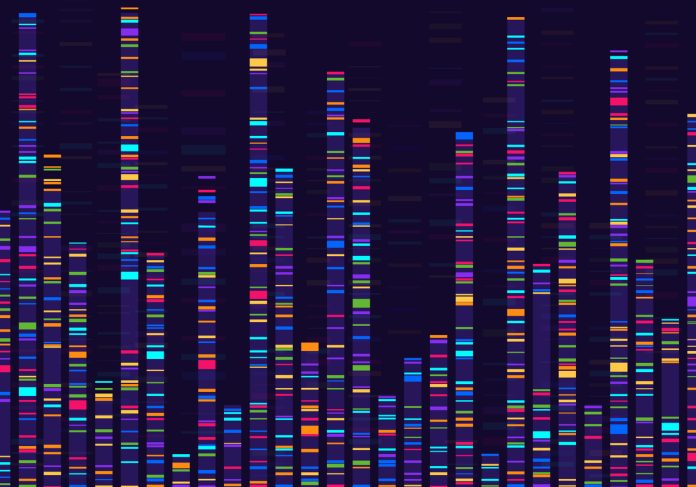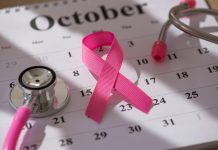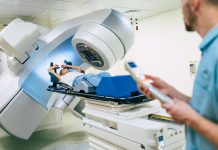Trevor Graham, Professor of Genomics and Evolution and the Director of the Centre for Evolution and Cancer at the Institute of Cancer Research, London, describes efforts to incorporate genome sequencing for cancer detection and treatment
Being able to detect cancer at an early stage when it is still curable is a key aim for researchers working to reduce the burden of the disease worldwide.
While programmes such as breast cancer screening and colonoscopies for colon cancer have been instrumental in identifying patients who need treatment, and saving lives, there is still an urgent need to find better ways of detecting cancer at an early stage in large groups of people.
Genomic sequencing technologies, which can be used to identify mutations in DNA, and help detect the presence of cancer, are playing an increasingly important role in early diagnosis and clinical care.
Currently, patients are asked to provide samples such as blood, urine, saliva, or tumour biopsies, which are then sent to a lab and sequenced. The data is then analysed to identify mutations that diagnose cancer, make predictions about prognosis and determine potential treatment options.
However, in the not-too-distant future, new technologies could enable sequencing almost at the point of care and in real-time, which could revolutionise the way we use genomics in clinical practice.
Long-read sequencing vs short-read sequencing
Two methods for reading DNA are short-read sequencing and long-read sequencing. Short-read sequencing reads short pieces of DNA (about 300 letters long) and is a bit like reading a book in small chunks. Long-read sequencing reads much longer pieces (up to 10,000 or 20,000 letters), which helps capture more information at once.
Both methods can detect ‘epigenetic marks’ – these are special DNA marks (like accents in language) which can turn genes on or off. This helps researchers to understand cancer better. At present, the primary technology used for this purpose is Illumina Sequencing (short-read sequencing), a platform that was held exclusively by a US company until very recently. However, recent changes in patents are expected to alter the sequencing technology landscape. An emerging new technology is Oxford Nanopore (long-read sequencing), which is not currently used in the clinic but shows exciting potential.
The trade-off between breadth and depth
While short-read sequencing is typically used to focus on gaining in-depth information of specific DNA locations to detect common cancer mutations (e.g. the mutations that are common in bowel, prostate, or breast cancers), long-read technology provides a broader view of the entire genome. One drawback of long-read sequencing is that, in its current form at least, it does not offer the same depth of information about specific genomic locations that short-read sequencing provides.
By concentrating our efforts on a limited number of locations, we may arrive at more definitive findings.
However, there’s also a risk that we could be investigating the wrong areas entirely. So, there’s a trade-off to be made between the breadth and the depth of the sequencing for early detection.
Almost the same argument applies when we’re looking at cancers themselves. There are key changes we might look for that would drive treatment decisions, such as if a patient can or cannot have a particular drug because we know it will or will not work for them. However, there may also be other changes elsewhere in the genome that could make that patient likely to benefit from some other drug that’s not very commonly used or not approved but may be available in an experimental treatment regime. We will never know unless we look in breadth at the whole genome.
Major barriers to translating cancer genomic research into clinical practice
When we talk about early detection, we’re often referring to whole-population screening programmes. This might involve conducting millions of tests for individuals within a specific age group across the UK or even worldwide. This approach is quite different from focusing on the relatively smaller number of people who develop cancer and examining their tumours in a hospital setting. In these two scenarios, the demands and pressures on technology and costs vary significantly.
Resources and costs are significant limitations. Taking a genomic test that has been developed in the lab and elevating it to the quality required for it to be suitable for clinical use demands substantial resources and financial investment.
Another barrier is that real-world data and patient experiences can differ significantly from those observed in clinical trials. We need to have data from real-world settings that can be compared to research findings.
How will the field of genomic sequencing for cancer evolve in the future?
The costs of genomic sequencing have fallen very rapidly for the past decade and will continue to do so. As it becomes less expensive, we can extract more genomic information from samples in a cost-effective way. This means that we will soon be able to use genomic data much more in our clinical decision-making.
There is so much more information locked up in the cancer genome than we currently use, and it will be really exciting to see that being discovered and used in the near future.











